The rich architectural heritage of Pakistan is particularly reflected in the famous Walled City of Lahore (also known as the Old City). Its origin lies in the ancient history of the Indo-Pak subcontinent. As suggested by its name, a wall of 30 feet was constructed to guard the city, with the famous thirteen gates of Lahore marking its entrance and exit points.
The bustling life within the walls, the narrow alleyways tucked between the streets of the historic district, the iconic buildings situated inside, and the ornate gates decorating the Old City – each has a story to tell of its glorious past.
Graana.com, Pakistan’s smartest property portal, highlights the 13 gates of Lahore that were once so significant during a long-gone era.
The Gates of Lahore: An Emblem of the Mughal Empire
The Mughal Empire left an indelible and prolific mark on the subcontinent by reviving Islamic architecture. Several iconic monuments, mosques, palaces, and forts were built during this time, which amalgamated Persian, Indian, and other provincial influences.
The character and composition of each structure boasted superior quality, perfect symmetry, intricate details, and refined ornamentation. Geometrical shapes, minarets, grand halls, pointed arches and large gateways were the most distinctive elements of Mughal architecture.
The Old City’s roots overlap with the Indus Valley Civilisation dating back to 2000 B.C., but it wasn’t until the invasion of the Mughals that it became prominent, especially during the reign of Akbar the Great. Several landmarks were built inside the city during that time. Its 13 gates served as protection and passageways and would be closed after sunset to keep intruders out.
Demolition of the Gates of Lahore During British Rule
However, during the British Raj in the 19th century, most of the gates were demolished in an attempt to weaken the security of the Old City. Instead, the Circular Road of Lahore and a circular garden were built in the area, both of which still exist today. Some of the gates were rebuilt later on, which is why the influence of the Anglo-Mughal architectural style can be seen in the existing gates.
The 13 Gates of Lahore
These impressive 13 gates would fittingly complement the city they were protecting. Only 6 of the 13 stand tall today, but without the walls that connected them in the past.
| Gates of Lahore | Current Condition | Notable Features | Location |
|---|---|---|---|
| Delhi Gate | Rebuilt after demolition, simple structure | Known as ‘Delhi Darwaza’; Royal Trail; entrance to historical sites like Wazir Khan Mosque and Shahi Hamam | Akbari Mandi, Walled City of Lahore |
| Bhati Gate | Rebuilt after demolition | Named after Rajput clan Bhattis; Allama Iqbal lived nearby; Data Durbar mausoleum; center for art and literature | Hakiman Town, Mohalla Patrangan, Walled City of Lahore |
| Kashmiri Gate | Still stands today | Faces direction of Kashmir; home to Kashmiri Bazaar and Azam Cloth Market; entrance to a girls’ college | Gali Pathanan, Walled City of Lahore |
| Lohari Gate | Rebuilt in 1864 | Possibly named after blacksmiths or variation of city’s name; led to red-light zone; Lohari Market, Anarkali Bazaar nearby | 227 Circular Rd., Jogi Mohalla, Walled City of Lahore |
| Roshnai Gate | Preserved in original glory | Known as ‘Gate of Lights’; main entrance for nobles; separates Lahore Fort and Badshahi Mosque; design pattern for other gates | Between Lahore Fort and Badshahi Mosque |
| Shairanwala Gate | Exists in crumbling state | Originally ‘Khizri Gate’; renamed ‘Shairanwala’ by Maharaja Ranjit Singh; River Ravi ferry stop | Qadimi Shehr, Nawan Mohalla, Walled City of Lahore |
| Masti Gate | No longer exists, destroyed by British | Near Lahore Fort and Mosque of Mariyam Zamani; wholesale shoe market | Maulana Obaid Ullah Anwar Rd., Walled City of Lahore |
| Akbari Gate | Knocked down by British | Named after Emperor Akbar; located in Akbari Mandi, famous for grain and spices trade | Circular Rd., Walled City of Lahore |
| Taxali Gate | Destroyed by British | Known for royal mint; led to Red Light District and Gawalmandi food street | Shahi Mohalla, Walled City of Lahore |
| Mochi Gate | Pulled down during British Raj | Name origin debated; entrance to Mochi Bagh; notable havelis; marketplace for dry fruits, fireworks, and kites | Mohalla Porbian, Walled City of Lahore |
| Yakki Gate | Demolished by British | Named after Zakki, a fallen fighter; area of noble’s havelis | 7 Circular Rd., Kucha Deputy Alam Shah, Walled City of Lahore |
| Shah Alam Gate | Partly burned in 1946, demolished in 1957, never rebuilt | Named after Shah Alam I; near Shah Alam Market, one of the largest commercial markets in Lahore | Between Mochi and Lohari Gates, Walled City of Lahore |
| Mori Gate | Destroyed, now Lahore’s biggest fish market | Smallest gate; never officially considered a gate; used for waste cleaning | Qadimi Shehar (near Urdu Bazar), Walled City of Lahore |
Delhi Gate
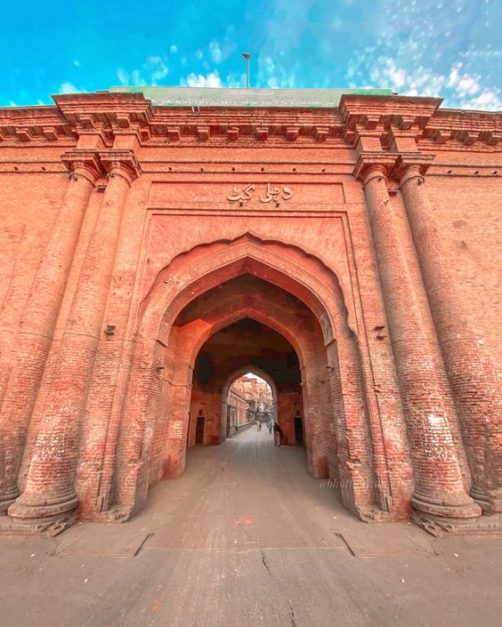
Delhi Gate, commonly known as ‘Delhi Darwaza’, is probably the most-visited gate out of all. It is even lit up at night for tourists today.
A distinguishing feature of this gate is the Royal Trail, which was once the only way to travel from Lahore to Delhi, the capital of the Mughal dynasty. It also served as the main entrance to Lahore during that time. Later on, during the Sikhs’ regime as well as British rule, it served as the court of magistrate, jails and police station.
One can visit many important historical buildings through this gate’s entrance, including Wazir Khan Mosque and Shahi Hamam. The famous Zamzama Gun, a large bore cannon, used to be placed at Delhi Gate before being shifted to the Lahore Museum.
After the partition, a girls’ school was also built here that is still functional to this day.
Location: Akbari Mandi, Walled City of Lahore (450 metres west of Circular Rd.)
Bhati Gate
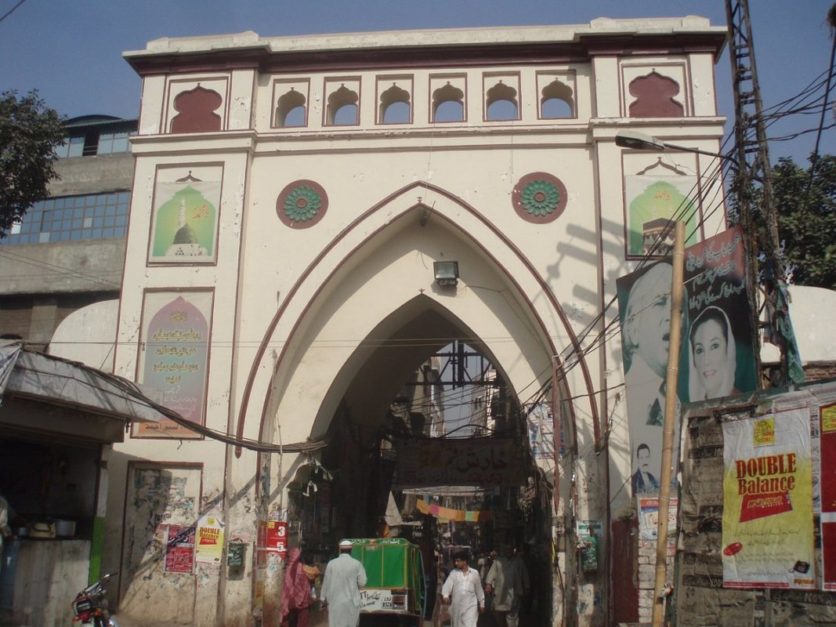
Bhati Gate is the second gate that provides entrance to the Old City from the western side, and also one of the oldest gates. It was named after an old Rajput clan, known as Bhattis, who lived here at some point in the past. Allama Iqbal, Pakistan’s national poet, also used to live in the vicinity between 1901 and 1905.
Oonchi Mosque and Fakir Khan are some of the well-known sites here. The most famous one, however, is Data Durbar, the mausoleum of the Sufi mystic Data Sahib Ganjbaksh.
It also used to serve as a centre for art and literature in the Old City. Musicians would gather in this area to perform.
You can find many spicy food stalls here and it is also where the Hakiman Bazaar begins.
Location: Hakiman Town, Mohalla Patrangan, Walled City of Lahore
Kashmiri Gate
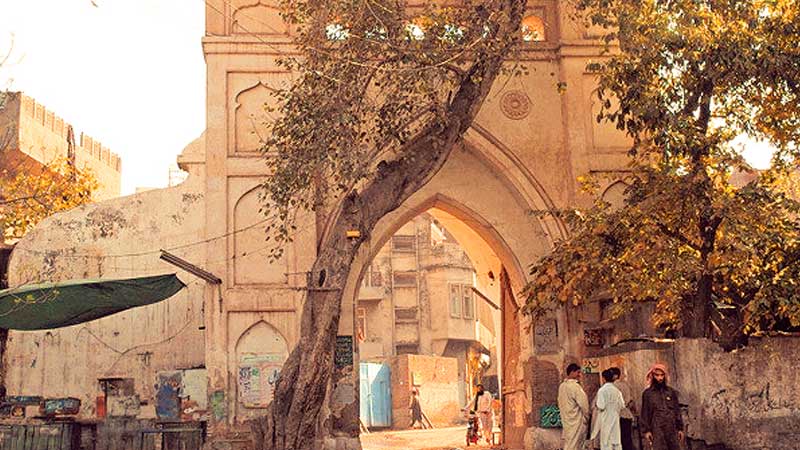
The gate has been named so because it faces the direction of Kashmir.
It is home to Kashmiri Bazaar, a popular shopping area, and Azam Cloth Market, the biggest cloth market in Asia.
It is also the entrance to a girls’ college that was built upon an ancient haveli.
Location: Gali Pathanan, Walled City of Lahore
Lohari Gate
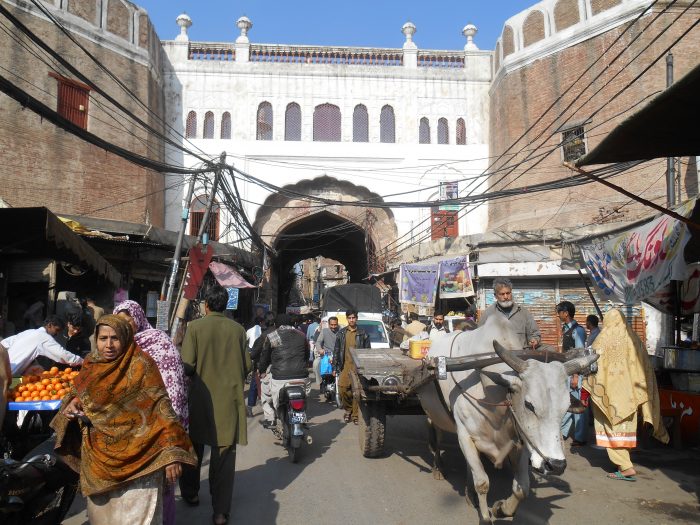
There is speculation that the gate got its name because many blacksmiths (lohars) would conduct their businesses just outside it – however, there is no actual evidence to support that. On the other hand, some people believe that the name is just a variation of the city’s name.
The Lohari Gate once led to the red-light zone of Lahore, and the wealthiest and most admired dancers would live here in palaces (havelis). A few of those still exist today and many families reside there.
The Lohari Market inside was the first international market of the subcontinent and also one of the oldest in South Asia. Lahore became the biggest producer of indigo dye during that time, which Europeans would then come to buy at this market.
The famous Anarkali Bazaar is also nearby, and many popular food street vendors can be found here as well.
Location: 227 Circular Rd., Jogi Mohalla, Mohalla Chiri Maran, Walled City of Lahore
Roshnai Gate
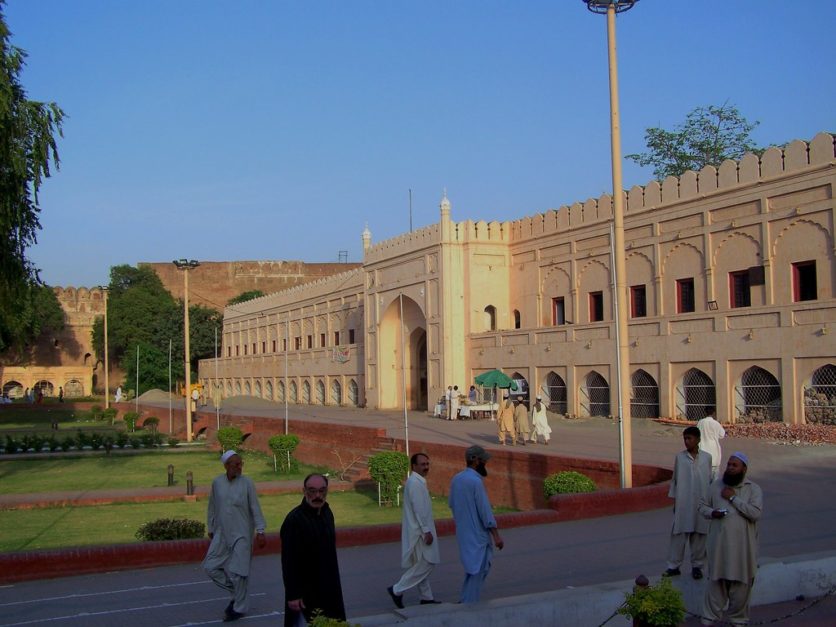
The Roshnai Gate is also known as the ‘Gate of Lights’ as royal officials would light it up in the evenings, which could be seen from the Walled City. This was done to help guide travellers at night.
It was once used as the main entrance into the city. Many courtiers, nobles, emperors and people from the upper class would especially travel through this gate to attend court. It is also the gate that separates the Lahore Fort and the Badshahi Mosque.
According to historical archives, all the gates were built similar to Roshani’s design pattern.
Location: Between the Lahore Fort and Badshahi Mosque
Shairanwala Gate
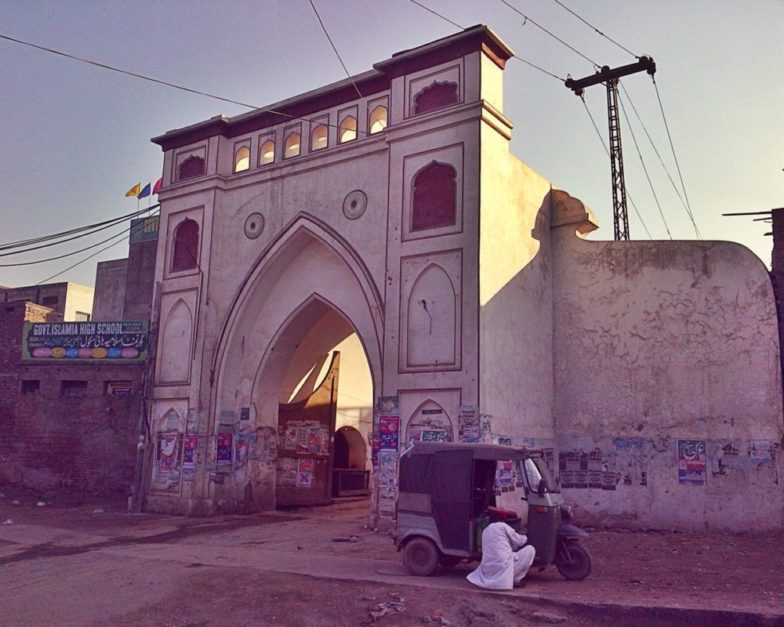
This was formerly named ‘Khizri Gate’ after the revered historical saint Khwaja Khizr.
It changed to ‘Shairanwala’ (the Gate of Lions) afterwards when Maharaja Ranjit Singh came to power. Two actual lions in cages were then used at the entrance as a warning sign for any threatening outside force.
In ancient times, River Ravi used to flow near the Old City, and the ferry would make stops near this gate.
Location: Qadimi Shehr, Nawan Mohalla, Walled City of Lahore
Masti Gate
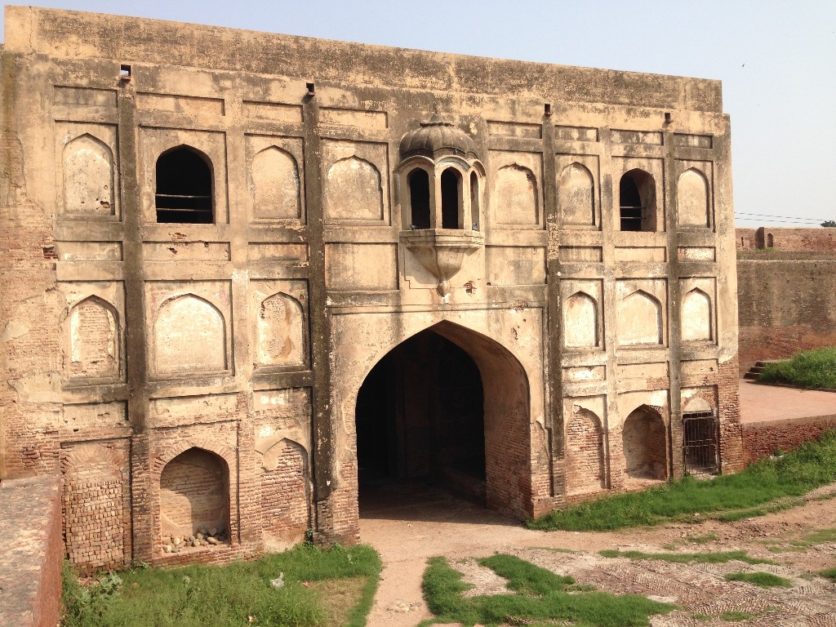
Masti Gate stands right behind the Lahore Fort. It was frequently used by Mughal rulers to reach the fort.
It is also located near the Mosque of Mariyam Zamani, one of the city’s oldest mosques that was named after Jahangir’s mother.
Many wholesale shoe sellers are lined up in the nearby area today.
Location: Maulana Obaid Ullah Anwar Rd., Katri Bawa, Walled City of Lahore
Akbari Gate
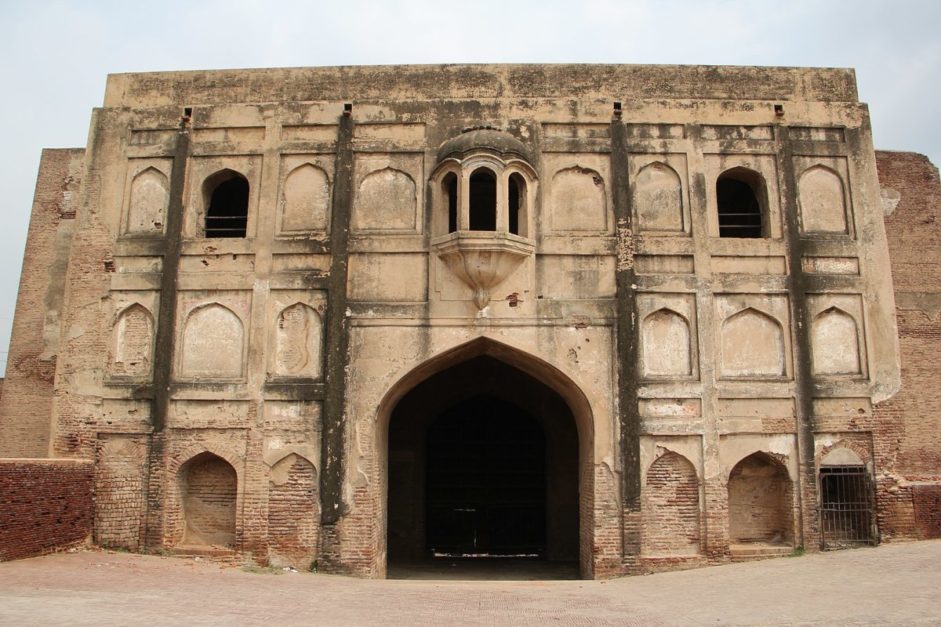
Akbari Gate is named after the Mughal emperor Akbar, who had devoted himself to rebuilding the Old City.
It is located amidst the famous market ‘Akbari Mandi’, where grain and spices are widely sold. Traders would come all the way from Central and South Asia to visit it. In fact, the British East India Company began its trade from this very market.
Location: Circular Rd. (opposite Rim Market), Walled City of Lahore
Taxali Gate
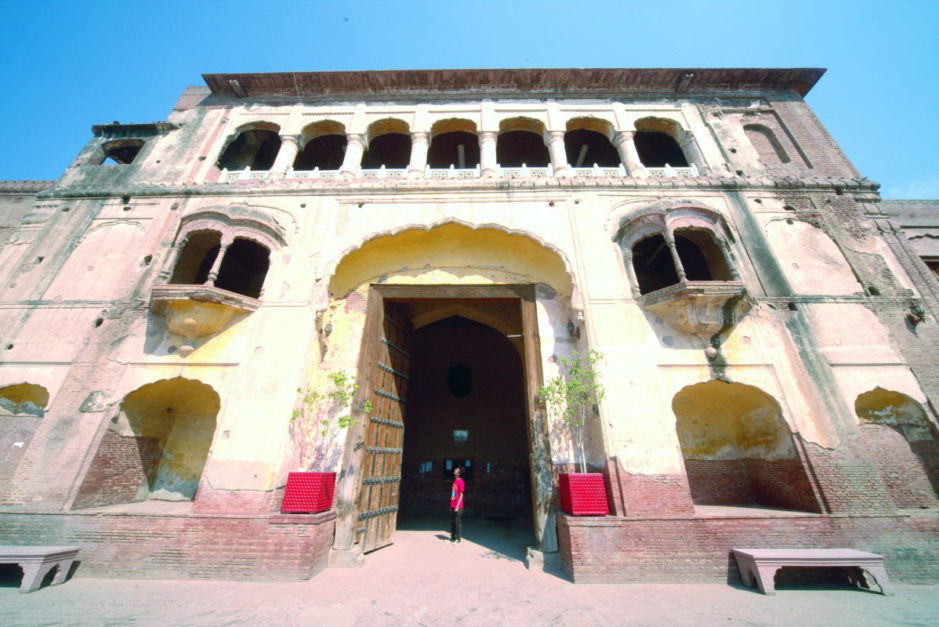
Taxali Gate, also known as Tixal (royal mint), would be the first thing that visitors coming from the west would see when entering Lahore. It was generally associated with the elite class as many famed musicians were living in close neighbourhoods at that time.
It also led to Lahore’s notorious Red Light District, as well as Gawalmandi, a popular food street among the tourists. A number of local shops still dot the surrounding area, serving local delights made from old family recipes.
Location: Shahi Mohalla, Walled City of Lahore
Mochi Gate
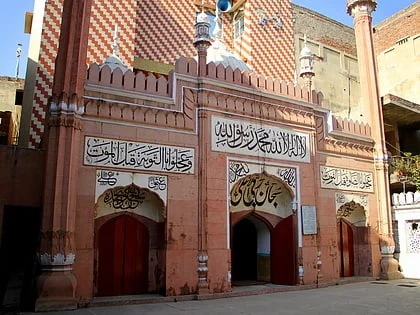
Different sources cite various reasons for the origin of the gate’s name. Some believe that it may have been named so due to multiple cobbler businesses that operated nearby. Other historians say that ‘mochi’ is a distortion of the word ‘morchi’, which means ‘trench soldier’ in Urdu. This can be supported by the fact that the governor’s personal security team was stationed here.
However, another myth exists, according to which Moti was actually a guard who performed his duty during the Mughal era until his death. The gate was, thus, named after him, until it evolved to ‘mochi’.
Mochi Gate serves as an entrance to Mochi Bagh, where many notable leaders of Pakistan have delivered speeches in the past.
Nisar Haveli, Mubarak Haveli and Laal Haveli are just a few examples of havelis that are stationed here.
It is also in the middle of a busy marketplace, where dry fruits, fireworks and kites are commonly sold. Previously, it was a production site for swords, arrows, bows and saddles.
Many Shi’ite buildings have also been constructed in this area, where the annual procession of Moharram usually begins.
Location: Mohalla Porbian, Walled City of Lahore
Yakki Gate
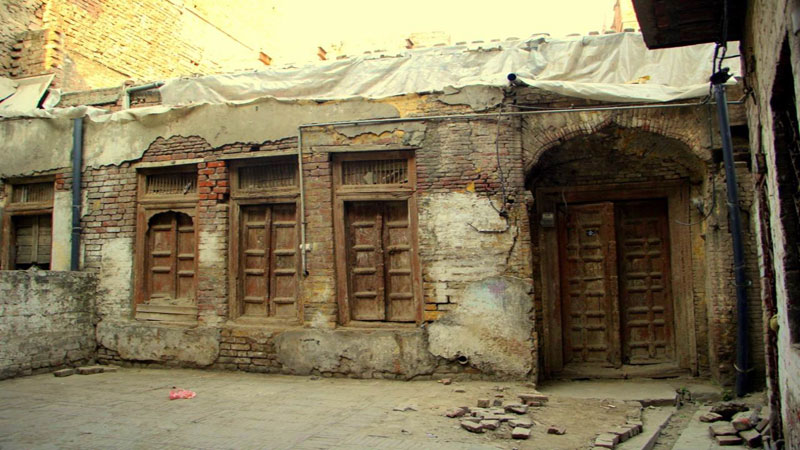
Yakki Gate is the last gate on the eastern side of the Old City. It was originally named ‘Zakki’ after a man who fell to his death while fighting against Mughal invaders from the north. As time passed, the name got distorted and became ‘yakki’.
Several nobles from the Mughal era lived in their havelis in this area, some of which still exist today.
Location: 7 Circular Rd., Kucha Deputy Alam Shah, Walled City of Lahore
Shah Alam Gate
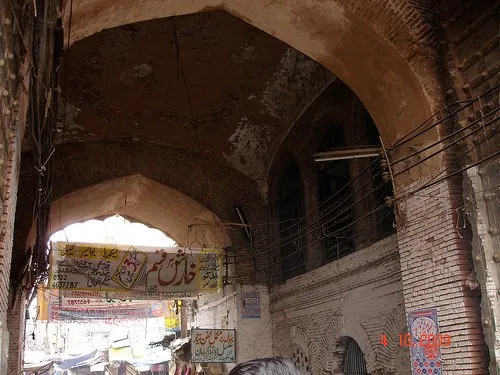
Shah Alam Gate was formerly known as ‘Bherwala Gate’. It was renamed to honour one of Aurangzeb’s sons, Shah Alam I, after his death. It is also fondly known as Shahalmi among local residents.
Shah Alam Market, one of the city’s largest commercial markets, had been set up just near the gate. It still remains a busy spot as people come here to buy goods in bulk — clothes, jewellery, crockery, gadgets etc. all are available here.
Location: Between the Mochi and Lohari Gates
Mori Gate
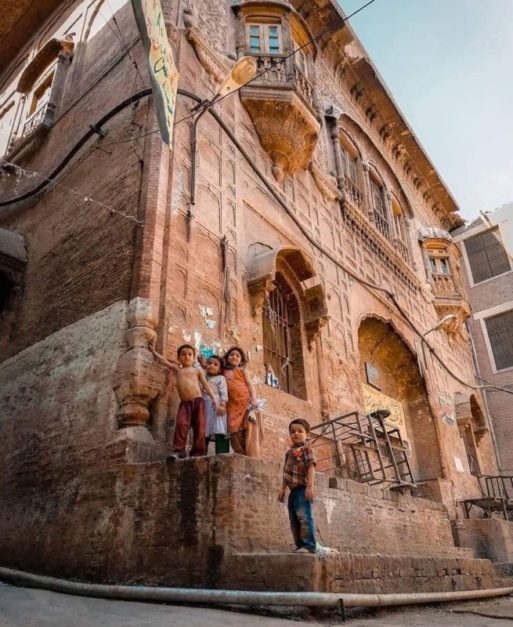
As the name ‘mori’ (small hole) implies, this was the smallest gate at the south of the Walled City. Though it was never actually considered as one of the official gates, it is commonly referred to as the 13th gate. It was also the only gate that wasn’t locked in the evenings.
Mori Gate resides just between Lohari Gate and Bhati Gate. The waste would be cleaned out daily from the city while passing through this gate.
Location: Qadimi Shehar (near Urdu Bazar), Walled City of Lahore
Like most heritage sites of Pakistan, these gates of Lahore reflect the splendour and legacy of past rulers. For more information on famous places in Pakistan, visit Graana blog.


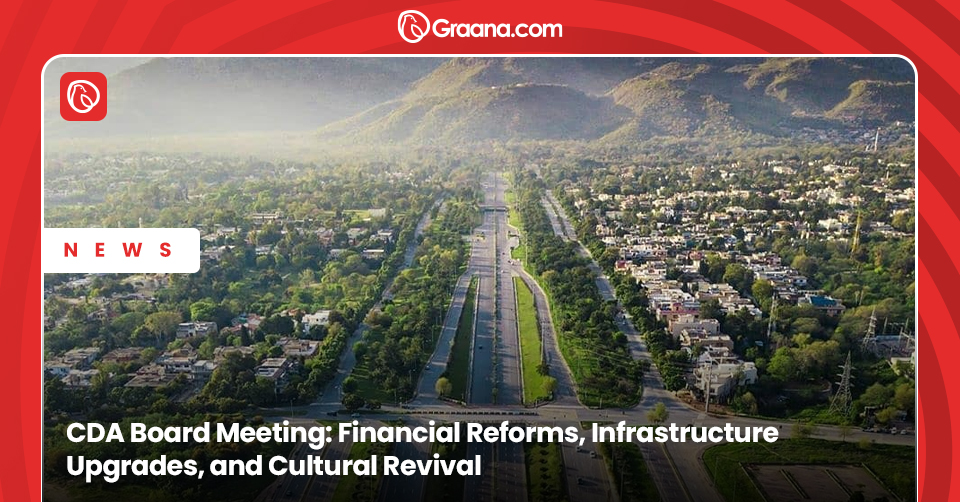
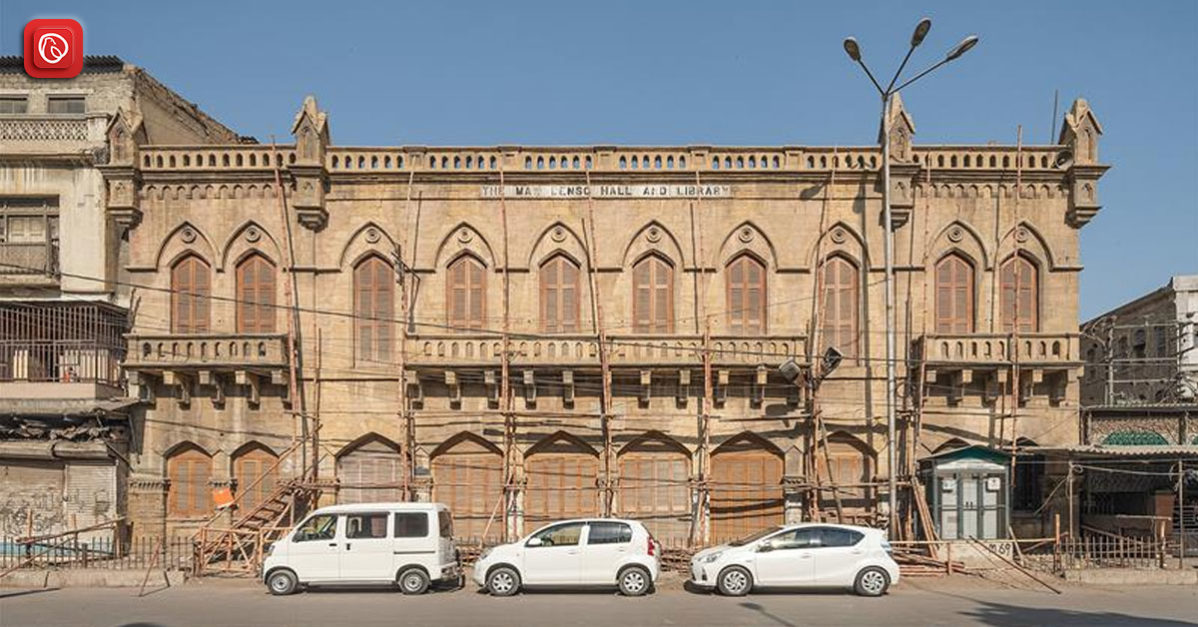

Please guide us any speedo route from jail road to Johar town. Near by Expo